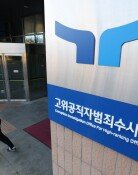South Korea’s semiconductor future faces uncertainty
South Korea’s semiconductor future faces uncertainty
Posted May. 09, 2024 07:58,
Updated May. 09, 2024 07:58
The United States, Japan, Europe, and Taiwan will attract a combined investment of 754 trillion won in semiconductor manufacturing facilities by 2030. This surge in investment is spurred by substantial subsidies aimed at attracting investments irrespective of company or nationality. In contrast, South Korea has only outlined a medium- to long-term roadmap up to 2047, primarily led by Samsung and SK. This delay places South Korea at risk of falling behind in the global semiconductor race, with concerns that within six years, the semiconductor industry landscape could undergo significant transformation as other countries establish their semiconductor manufacturing capabilities.
Recent data compiled by The Dong-A Ilbo in conjunction with the Korea Institute for Industrial Economics and Trade reveals investment plans for semiconductor-related manufacturing facilities in the U.S., Japan, Europe, and Taiwan from 2021 to the present. The year 2021 drew global attention to semiconductor supply chains due to the supply shortage triggered by the COVID-19 pandemic. The total investment during this period amounted to 552.418 billion dollars, with the completion of these investments anticipated by around 2030.
The United States led the way, attracting over 325.6 billion dollars in semiconductor investments over the three-year period, followed by Europe (88.4 billion dollars), Japan (72.3 billion dollars), and Taiwan (66.1 billion dollars). Traditionally weaker in semiconductor manufacturing, the U.S., Japan, and Europe have heavily subsidized semiconductor investments to bolster economic security. Consequently, foreign companies represented 30 to 80 percent of the total investments announced in these countries.
In contrast, South Korea has been slower in responding. In January, the government unveiled plans for Samsung Electronics and SK hynix to invest a total of 622 trillion won to establish a semiconductor cluster in Yongin and Pyeongtaek, Gyeonggi Province. However, this is an extensive long-term initiative extending to 2047, which is susceptible to market uncertainties and heavily reliant on the involvement of two key companies, Samsung Electronics and SK hynix.
Do-Young Kwak now@donga.com







